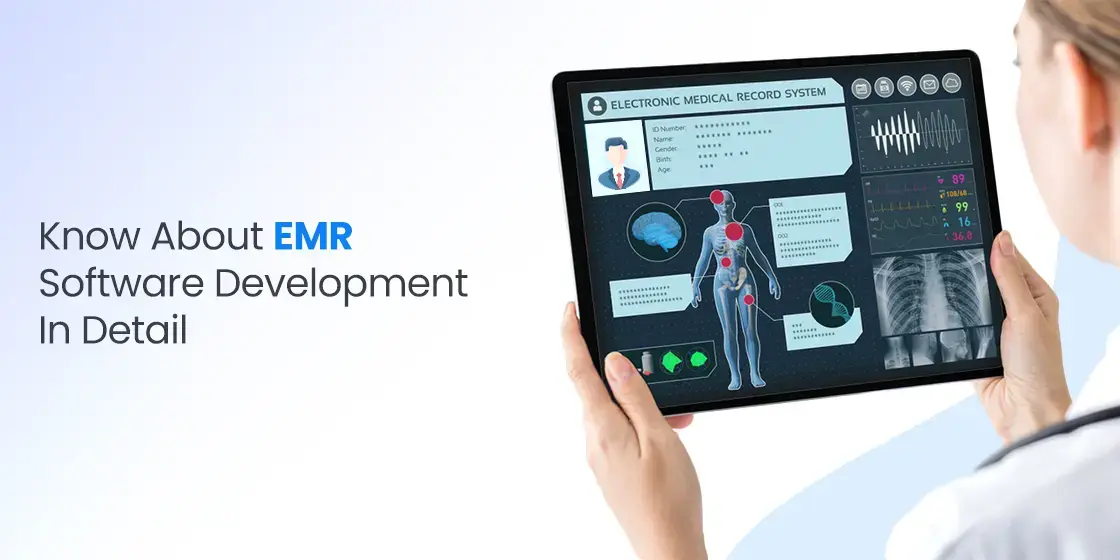Table of Content
Know About the Importance and Utility of EMR Systems Below
With the help of new-age technology, healthcare sector has seen a massive rise during the few years. The advanced tech systems and solutions introduced for the medical centers are helping to modernize their overall operations. EMR systems are considered very important in this regard, as they help organizations to store all the data of patients securely in a database. These systems are increasingly becoming important, hence the demand of EMR software development is gaining momentum in the market. They are used by almost all types of medical institutions, from hospitals to small clinics and more others.
To develop a quality EMR system, it is best advised to always take professional software development services. Companies that are more experienced in the market, usually provide top-class development solutions. They ensure to build systems as per the given requirements, so that you can work with them comfortably. Today, you can find plenty of such companies offering quality services in the market, such as BariTechSol. It is a highly reputable UAE based agency that provides software development solutions to all types of businesses.
But, if you are pursuing to build an EMR software by yourself, there are some basics and technicals you need to know first. This blog is therefore written to let you understand how EMR software should be developed by following a step-by-step process. It will give you a brief overview of the EMR software development, so that you can get started with it easily. Let’s first understand what is an EMR software, and how does it work to record all the information of patients.
What is EMR Software?
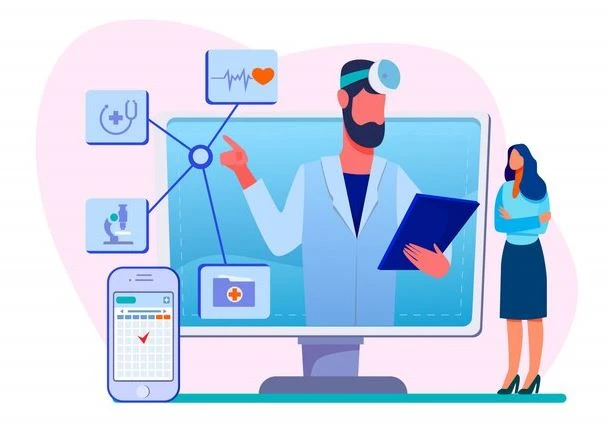
An Electronic Medical Record (EMR) system is a sophisticated software solution designed to digitize and manage patient charts. By transforming traditional paper records into electronic format, EMR systems enable healthcare providers to efficiently store vast amounts of patient data. This digital approach not only streamlines record-keeping but also significantly reduces the physical storage space needed for patient files, promoting a more organized and clutter-free environment in medical facilities.
One of the key advantages of EMR systems is their ability to facilitate the seamless sharing and retrieval of patient information. Healthcare providers can quickly access a patient’s complete medical history, ensuring that all relevant data is available at the point of care. This capability is crucial for making informed clinical decisions, especially in emergency situations where timely access to a patient’s health information, such as current medications and known allergies, can be life-saving.
EMR systems comprehensively encompass various aspects of a patient’s health information. They include detailed medical histories, immunization records, documented allergies, prescribed medications, and recorded diagnoses. By maintaining this information in a centralized electronic database, EMR systems not only improve the accuracy and completeness of patient records but also support better management of chronic diseases, preventive care measures, and treatment plans.
Why Hospitals Need EMR Software?
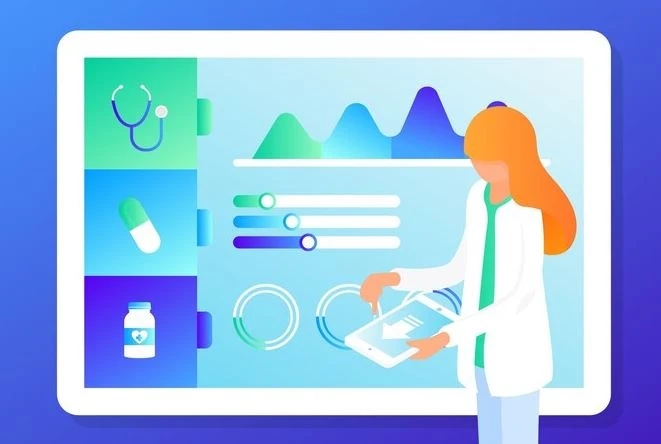
Medical institutions need EMR systems primarily to enhance the quality and efficiency of patient care. EMR systems centralize patient data into a digital format, making it easily accessible to healthcare providers. This immediate access to comprehensive patient information, including medical histories and more ensures that clinicians have all the necessary data at their fingertips, enabling more informed and timely decision-making. By having a complete patient record readily available, healthcare providers can deliver higher quality care, reduce the likelihood of medical errors, and improve overall patient outcomes.
Another critical reason for the adoption of EMR systems is the significant improvement in operational efficiency they provide to medical institutions. EMR systems automate many routine administrative tasks such as appointment scheduling, billing, and coding, which not only saves time but also reduces administrative overhead. The automation of these processes minimizes paperwork, decreases the risk of errors associated with manual entry, and frees up staff to focus more on patient care rather than administrative duties.
Furthermore, EMR systems are essential for ensuring regulatory compliance and facilitating better data management. Healthcare institutions are required to adhere to various regulations, such as the Health Insurance Portability and Accountability Act (HIPAA) in the United States. EMR systems help institutions comply with these regulations by providing robust security and audit trails that track access to patient records. Moreover, EMR systems enable the generation of detailed reports, which can be used for clinical research, and meeting reporting requirements for governmental and insurance entities.
Types of EMR Systems
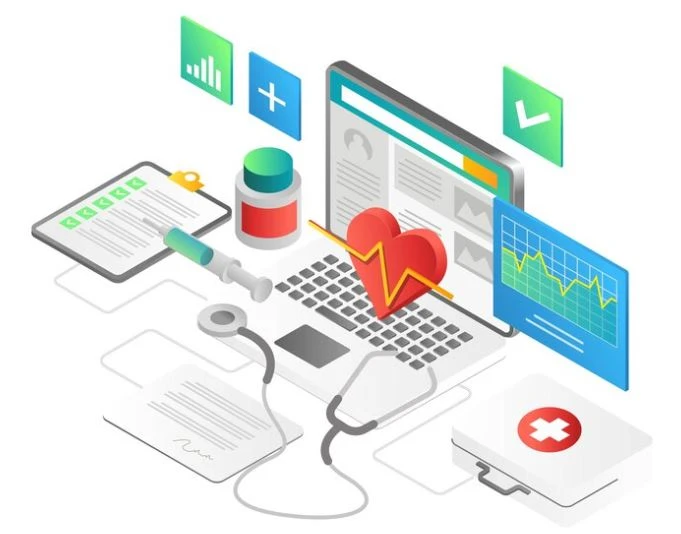
There are different types of EMR softwares used in the industry. They are built with varying features to support the unique functional needs of medical institutions. Before building an EMR system, it is important for you to know about these types. It helps you to know which system is needed to address the needs of a client. Let’s take a quick look at them below.
Acute Care EMR
EMR systems are specifically tailored for hospitals and facilities that provide inpatient care, ensuring they meet the unique needs of these environments. Acute care EMR systems are optimized to handle the intensive demands of inpatient care with exceptional efficiency. These systems are implemented to meticulously manage data pertaining to patient admissions and discharges, ensuring that all relevant information is accurately recorded. This includes detailed patient records that are critical for ongoing care, enabling healthcare providers to track and update patient information seamlessly.
In addition to basic patient management, acute care EMR systems are designed to handle the complexity of various critical data points. They efficiently manage intricate information such as medication orders, laboratory results, and vital signs, ensuring that healthcare providers have real-time access to essential patient data. By integrating this comprehensive information into a single platform, these systems facilitate better coordination of care, improve clinical decision-making, and enhance patient safety.
Fuel innovation by leveraging bespoke software solutions. Get in touch with our team of experts to build cutting-edge software products.
Get a QuoteCloud EMR Systems
Cloud-based electronic medical record (EMR) solutions offer a more cost-effective alternative compared to traditional on-premises EMR systems. Implementing an on-premises EMR platform requires substantial upfront investments in IT infrastructure, including the purchase and maintenance of hardware, servers, and software licenses. Additionally, there are ongoing costs associated with IT support, system upgrades, and security measures to ensure the EMR system runs efficiently and remains compliant with regulatory standards.
In contrast, cloud-based EMR solutions utilize a scalable, ready-to-use IT infrastructure that eliminates the need for significant capital expenditures on hardware and software. These systems are hosted on remote servers managed by the service provider, who takes care of maintenance, security, and updates. Cloud-based EMRs offer flexible pricing plans that cater to the varying needs and budgets of healthcare facilities, allowing them to pay for only the resources they use. This scalability ensures that medical institutions can easily adjust their EMR capabilities in response to changing demands of the industry.
Ambulatory EMR
Electronic medical record (EMR) systems are specifically designed to address the unique needs of outpatient medical facilities, ensuring that these healthcare environments can operate efficiently and effectively. Ambulatory EMRs are essential tools for primary care clinics, providing a comprehensive platform for managing various aspects of patient care and administrative tasks. These systems streamline the patient registration process, allowing clinics to capture and store patient demographic information accurately and securely.
Moreover, ambulatory EMRs enhance the quality of patient care through features like electronic prescribing (e-prescribing), which allows healthcare providers to send prescriptions directly to pharmacies electronically. This not only improves the accuracy of prescriptions by reducing the risk of errors associated with handwritten prescriptions but also speeds up the medication dispensing process, enhancing patient satisfaction. These systems also support other critical functions such as documenting patient encounters, managing medical histories, and integrating laboratory results.
EMR Software Development: Key Steps to Follow
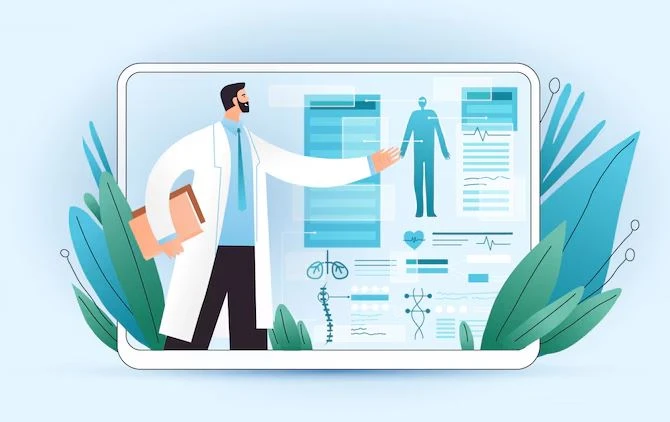
Developing an EMR software is certainly not an easy job. It requires good understanding of the technicals, as well as the knowledge of various development strategies. Those who are not equipped with these information often struggle to create a quality platform. If you are also one of them having no knowledge about the process that should be followed for EMR software development, take a look at the core steps defined below.
Conduct Thorough Research
Conducting research before developing an EMR system involves several critical steps to ensure that the final product meets the specific needs of healthcare providers and complies with industry standards. The first step is to perform a comprehensive needs assessment by engaging with stakeholders, including doctors, nurses, administrative staff, and IT professionals. This can be achieved through surveys, interviews, and focus group discussions. The aim is to gather detailed insights into their workflows, challenges, and requirements for an EMR system.
The second step is to conduct a thorough market analysis and review of existing EMR systems. This involves studying the features, advantages, and limitations of current systems available in the market. Benchmarking against industry leaders can provide valuable insights into best practices and innovative features that could be incorporated into the new system. Additionally, reviewing regulatory requirements, such as HIPAA, is essential to ensure that the EMR system will comply with all legal standards for data security and patient privacy.
Select Tech Stack
Selecting tools and technologies for developing an EMR system involves a strategic approach that considers both the functional requirements and the technical infrastructure needed to support the system. First, it is crucial to identify the core functionalities that the EMR system must deliver, such as patient registration, appointment scheduling, and more. Based on these requirements, choose coding languages that are well-suited to build robust and scalable applications. Popular choices might include languages like Java, Python, Ruby, C# and more others.
The second aspect to consider is the infrastructure and support technologies needed to ensure the EMR system is reliable, secure, and scalable. This includes selecting a suitable database management system (DBMS) that can handle large volumes of sensitive patient data efficiently, such as MySQL, PostgreSQL, or MongoDB. Cloud-based solutions, such as AWS, Microsoft Azure, and others are often preferred for their scalability and robust security features. They offer a range of services that can support the development and maintenance of the EMR system, including server less computing, data storage and more.
Design and Development
Following the initial planning and selection of tools and technologies, the next critical phase in the development of an EMR system is UI/UX design. This phase focuses on crafting user interfaces that are not only visually appealing but also highly functional and intuitive. The objective is to create a seamless and enjoyable experience for end-users, which includes healthcare providers and administrative staff. During this stage, designers develop the interactive elements and visual components that define the user interface, such as buttons, menus, forms, and dashboards.
The subsequent step in the development process is the actual implementation of the system’s functionality through coding. This involves setting up the backend infrastructure, developing the necessary modules, and integrating all components into a cohesive system. The development team employs a Service-Oriented Architecture (SOA) approach, which allows for modular and flexible system design. This architecture enables different services within the EMR system, such as patient management, appointment scheduling, electronic prescribing and more others.
Testing & QA
In the final stage of EMR software development, extensive testing is conducted across multiple parameters to verify its functionality and ensure it operates as intended. The Quality Assurance (QA) team meticulously tracks and documents any bugs or errors encountered during this phase. Their goal is to ensure that the software performs correctly, without any unexpected behavior that could disrupt user experience or compromise data integrity. This rigorous process includes running the software through a series of predefined test cases and scenarios to identify and resolve any issues.
Additionally, the EMR solution undergoes thorough testing for security and compliance. This involves checking the software against various security protocols to protect sensitive patient information from unauthorized access or breaches. Compliance testing is also crucial, as it ensures the solution adheres to relevant healthcare regulations and standards, such as HIPAA. This comprehensive evaluation guarantees that the EMR system is not only functional but also secure and legally compliant, providing a reliable and safe tool for healthcare providers.
Important Features for EMR Software Development
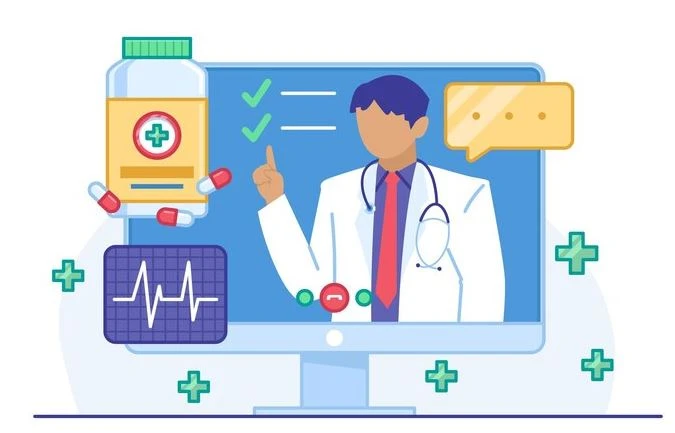
The features embedded in EMR systems are quite advanced, as they are designed specifically to facilitate medical institutions. These features perform a variety of tasks, hence they become highly important for the administrators. If you are working on EMR software development, make sure to integrate these features into your platform to make it market competitive.
Appointment Scheduling
EMR systems are invaluable for efficiently managing and tracking patient appointments. These systems include a robust scheduling feature that not only organizes and monitors appointment slots but also streamlines the entire process for both healthcare providers and patients. By automating the scheduling process, EMR systems reduce the likelihood of errors, overbooking, or missed appointments, ensuring a smoother workflow within medical practices.
Custom Templates
A high-quality EMR system is equipped with pre-designed templates that allow healthcare professionals to quickly and easily input necessary patient information. These templates are tailored to accommodate various medical scenarios and specialties, which significantly streamlines the documentation process. By utilizing these templates, clinicians can expedite the charting process, ensuring that patient records are accurate and comprehensive without sacrificing valuable time.
Data Distribution
Robust EMR solutions are designed to facilitate seamless data sharing among various healthcare stakeholders, including laboratories, pharmacies, and others. These systems enable the efficient exchange of patient information, ensuring that all relevant parties can easily access and utilize comprehensive patient records. This interconnectivity is essential for coordinated care, as it allows for real-time updates and sharing of critical patient data.
Reporting and Analytics
This functionality enables healthcare providers to monitor various performance indicators comprehensively, allowing for a detailed analysis of clinical and operational data. By systematically tracking these metrics, providers can gain valuable insights into patient outcomes, and overall service quality. This continuous monitoring is instrumental in identifying emerging trends and patterns within the healthcare environment, which can highlight areas needing improvement or adjustment.
Cost of EMR Software Development

The cost of EMR software development depends on various factors. Generally, the development budget of such projects falls within a broad range, from $20,000 to $45,000. The price largely depends on the specific functionalities and the overall complexity of the EMR system being deployed. Each healthcare organization has unique needs and functional requirements, which are shaped by their size, geographic location, and the type of services they provide.
Additionally, factors such as the level of customization, training for staff, ongoing support, and maintenance also contribute to the overall cost. Therefore, the financial investment in EMR software development is highly variable and tailored to the specific demands of each healthcare organization.
Frequently Asked Questions
| What is an EMR software? EMR software is a digital system used to create, store, and manage patient medical records electronically. It streamlines clinical workflows and enhances the accuracy and accessibility of patient information for healthcare providers. |
| Why EMR system is important for hospitals? EMR systems are crucial for hospitals as they enhance patient care by providing efficient access to comprehensive medical records, streamlining administrative tasks, and facilitating communication among healthcare providers. |
| How many types of EMR software are used in the industry? There are different types of EMR software used in the industry. Some of the popular types among them includes Cloud EMR, Hybrid EMR, Acute Care EMR and more others. |
Final Words
That takes us to the end of this blog in which we have discussed how to develop an EMR software as per latest industry standards. These systems have become an important demand of the healthcare world, as they allow medical institutions to keep track of all the patient data effortlessly. Keeping this in view, we have discussed all the important points in this blog that could help you in EMR software development. By following all these points correctly, you will be able to build a quality EMR system rightly as per the latest SaaS trends.
Empower your digital initiatives with BariTechSol, a premier custom software development company. Our skilled team tailors cutting-edge solutions to your unique needs. Elevate your tech experience and stay ahead in the digital realm. Partner with BaritechSol and code the success of your next big idea.
